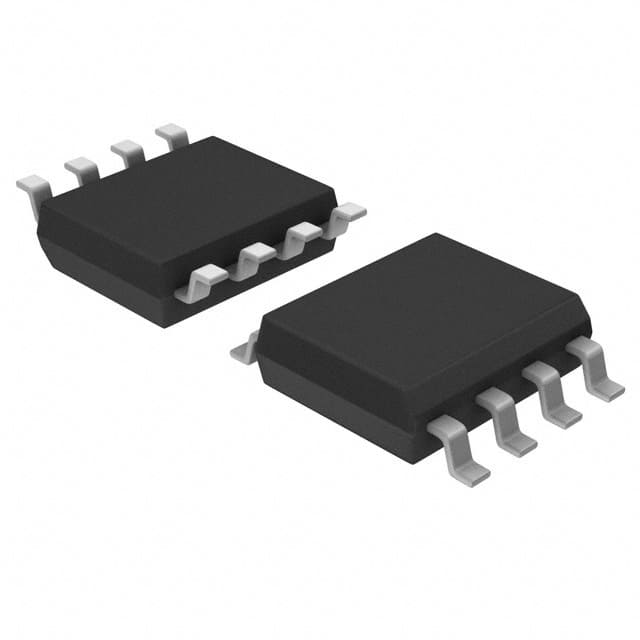2402MLFT
Overview
Category: Electronic Component
Use: Signal Amplification
Characteristics: High Gain, Low Noise
Package: SOT-23
Essence: Monolithic Microwave Integrated Circuit (MMIC)
Packaging/Quantity: Tape and Reel, 3000 units per reel
Specifications and Parameters
- Frequency Range: 1 MHz - 2 GHz
- Gain: 20 dB
- Noise Figure: 2 dB
- Input Power: 10 dBm
- Output Power: 17 dBm
- Supply Voltage: 3.3 V
- Current Consumption: 15 mA
Pin Configuration
The 2402MLFT has a total of 3 pins arranged as follows:
- Pin 1: RF Input
- Pin 2: Ground
- Pin 3: RF Output
Functional Characteristics
The 2402MLFT is designed to amplify weak signals in the frequency range of 1 MHz to 2 GHz. It offers a high gain of 20 dB, allowing for signal amplification without significant degradation. The low noise figure of 2 dB ensures minimal noise contribution during amplification, resulting in improved signal quality.
Advantages and Disadvantages
Advantages: - Wide frequency range coverage - High gain for effective signal amplification - Low noise figure for improved signal quality - Compact SOT-23 package for space-constrained applications
Disadvantages: - Limited output power capability - Requires a 3.3 V supply voltage
Applicable Range of Products
The 2402MLFT is commonly used in various electronic devices that require signal amplification, such as communication systems, wireless transceivers, and RF modules.
Working Principles
The 2402MLFT utilizes a monolithic microwave integrated circuit (MMIC) design to achieve signal amplification. It employs a combination of active and passive components to amplify weak input signals while maintaining low noise levels.
Detailed Application Field Plans
The 2402MLFT can be applied in the following fields:
- Wireless Communication Systems: Enhances signal strength for improved transmission and reception.
- RF Modules: Amplifies weak RF signals for further processing or transmission.
- Test and Measurement Equipment: Boosts signal levels for accurate measurements.
- Satellite Communication Systems: Increases signal power for reliable communication over long distances.
- Radar Systems: Amplifies radar signals for enhanced detection capabilities.
Detailed Alternative Models
- 2401MLFT: Similar specifications but with a lower frequency range of 100 kHz - 1 GHz.
- 2403MLFT: Similar specifications but with a higher frequency range of 1 MHz - 3 GHz.
- 2404MLFT: Similar specifications but with a higher gain of 25 dB.
- 2405MLFT: Similar specifications but with a lower noise figure of 1.5 dB.
- 2406MLFT: Similar specifications but with a higher output power of 20 dBm.
5 Common Technical Questions and Answers
Q: What is the maximum input power that the 2402MLFT can handle? A: The 2402MLFT can handle an input power of up to 10 dBm.
Q: Can the 2402MLFT operate with a supply voltage other than 3.3 V? A: No, the 2402MLFT requires a supply voltage of 3.3 V for proper operation.
Q: Is the 2402MLFT suitable for high-frequency applications? A: Yes, the 2402MLFT operates in the frequency range of 1 MHz to 2 GHz, making it suitable for high-frequency applications.
Q: What is the typical current consumption of the 2402MLFT? A: The 2402MLFT has a typical current consumption of 15 mA.
Q: Can the 2402MLFT be used in battery-powered devices? A: Yes, the 2402MLFT's low current consumption makes it suitable for battery-powered devices.
This article provides an overview of the 2402MLFT, including its basic information, specifications, pin configuration, functional characteristics, advantages and disadvantages, applicable range of products, working principles, detailed application field plans, alternative models, and common technical questions and answers.


